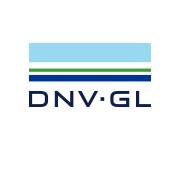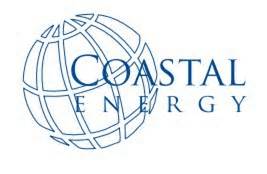 New report reveals optimism in the sector but caution over rising costs and oil prices
New report reveals optimism in the sector but caution over rising costs and oil prices
Amid a positive outlook for the industry in 2014, senior oil and gas professionals have forecasted tighter monitoring of capital expenditure (capex) this year, according to new research published today by DNV GL, the leading technical advisor to the oil and gas industry. While nine in 10 (88%) respondents to the research are confident about the sector, concerns over rising operational costs, a shortage of skilled professionals and competition from international rivals are causing professionals to focus spending on the projects that will provide the greatest return on investment.
According to the report, the proportion of companies planning to increase investment in new projects has declined by 18 percentage points over the past three years, from a high of 63% in 2012 to just 45% in 2014. For the first time since 2011 and the aftermath of Macondo, overall confidence in the oil and gas sector has fallen – albeit only by one percentage point – signaling a shift in sentiment.
The findings come from a new research report, Challenging Climates: The outlook for the oil and gas industry in 2014, which was undertaken on behalf of DNV GL. The research provides a snapshot of industry sentiment about the year ahead and is based on a survey of more than 430 senior oil and gas professionals and in-depth interviews with more than 20 industry executives.
Key findings include:
• Despite some signs of caution, the overall outlook for 2014 is confident among industry professionals: around nine in 10 (88%) are optimistic about the outlook for 2014
• Respondents expect to keep a closer watch on costs: six in 10 (62%) intend to pressure suppliers to curb cost increases next year, especially across Asia
• Uncertainty over oil and gas prices will be more prevalent in 2014: nearly one in four (23%) of industry professionals thinks oil and gas prices will weaken this year, while 36% remain unsure
The report revealed a number of other findings including the skills issue and related to various regions. More about this here:
Shortage of key skills will be greatest barrier to oil and gas industry growth, new research reveals
North Sea oil and gas investment softens
New report reveals confidence among Asia Pacific oil and gas professionals
New report reveals: North America and Brazil to hold greatest growth opportunities for oil and gas industry in 2014
Elisabeth Tørstad, CEO of DNV GL – Oil & Gas, says: “Oil and gas industry projects are becoming increasingly complex as the industry continues to operate in more challenging environments. The cost of exploration and production is rising, the industry’s pool of skilled professionals is decreasing and companies are feeling greater pressure on their overheads. This is all leading to great focus and a degree of ‘belt tightening’ across the industry with a view to keeping a tighter rein on capital expenditure. Although confidence is still high, for the first time since 2011 and the aftermath of Macondo, overall confidence in the oil and gas sector has fallen marginally, signaling a slight shift in sentiment.
“We’re also starting to see signs of greater consolidation across the oil and gas industry supply chain. Our research gives clear signs that pressure will be put on suppliers to become more innovative, to reduce costs and to show value in 2014 by providing access to scarce, in-demand skills and by demonstrating real quality in the products and services they deliver.”
Greater consolidation
In response to rising costs, operators will seek to rely on larger supply chain partners which are more capable of providing a consistent global service, according to the report. About one in five (22%) survey respondents says that their company will increase its work with larger partners, compared with just 6% in 2012.
Furthermore, more than a third (37%) of operators say that their companies intend to acquire partners with the specialist knowledge and skills they need as they move into tougher exploration and production sites, with almost half (49%) saying they will need to increase alliances with others to share knowledge in order to cope with more challenging environments.
In turn, DNV GL’s research affirms that operators will focus on controlling risks and costs by seeking greater standardization in their procurement approaches. This gives rise to greater interest in oil companies centralizing, standardizing and streamlining their supply chain to avoid costs in creating new solutions.
Future investment
The report also reveals that the US, Brazil and Australia are the top investment destinations for 2014, with larger operators seeking to expand into challenging new environments such as deepwater sites in East Africa and the Arctic.
Download a complimentary copy of Challenging Climates from: http://www2.dnvgl.com/2014-challenging-climates.pdf
.


 NYC-based
NYC-based  Liftboats have come a long way. Since breaking out of the Gulf of Mexico the global fleet of these self-propelled, self-elevating vessels has grown by over a third and now stands at more than 300 units worldwide. They are now tried and trusted in West Africa, the Persian Gulf and the North Sea. In South East Asia, they are finally gaining a foothold with key operators. Unlike immobile jack-up barges, liftboats offer more, typically performing well intervention, maintenance and installation workscopes. They are now being used for offshore EOR campaigns and we would not be surprised to see a growth in such deployments. The concept is also making a big impact in the offshore wind turbine installation business.
Liftboats have come a long way. Since breaking out of the Gulf of Mexico the global fleet of these self-propelled, self-elevating vessels has grown by over a third and now stands at more than 300 units worldwide. They are now tried and trusted in West Africa, the Persian Gulf and the North Sea. In South East Asia, they are finally gaining a foothold with key operators. Unlike immobile jack-up barges, liftboats offer more, typically performing well intervention, maintenance and installation workscopes. They are now being used for offshore EOR campaigns and we would not be surprised to see a growth in such deployments. The concept is also making a big impact in the offshore wind turbine installation business. Coastal Energy Company
Coastal Energy Company New report reveals optimism in the sector but caution over rising costs and oil prices
New report reveals optimism in the sector but caution over rising costs and oil prices